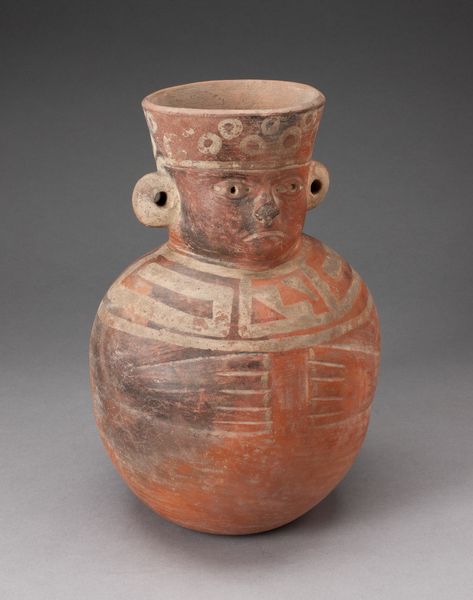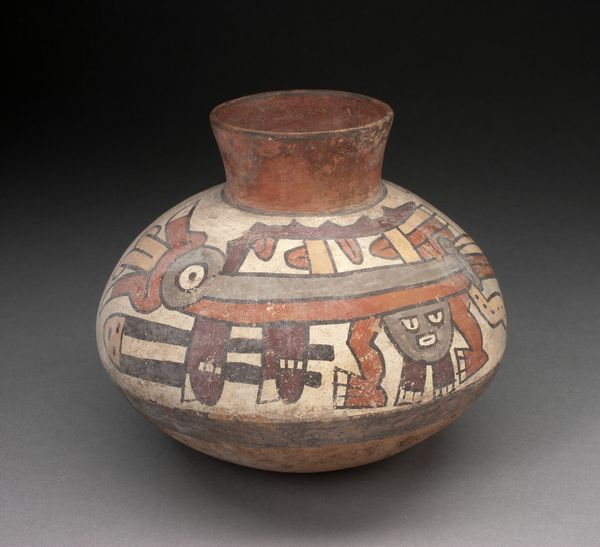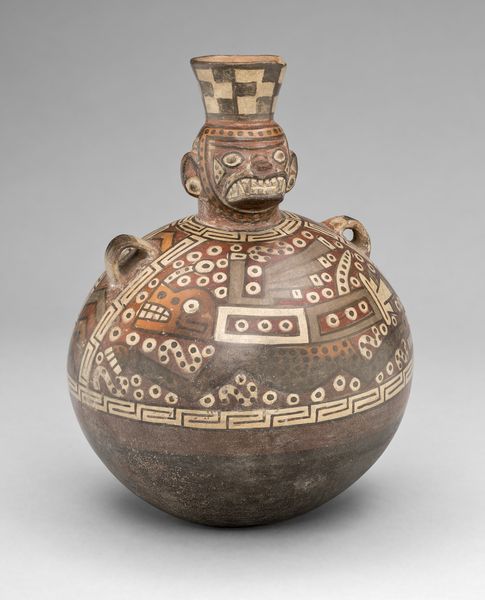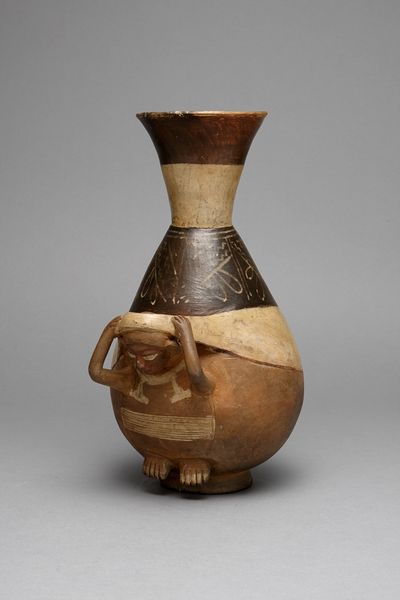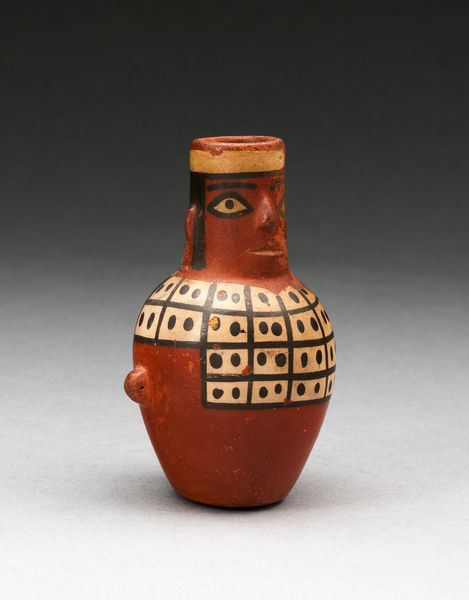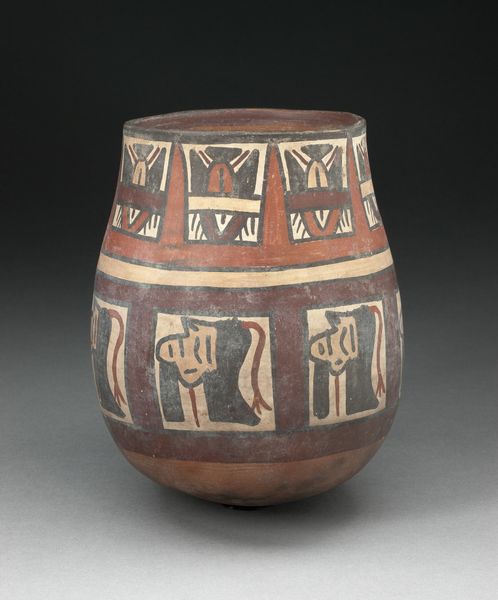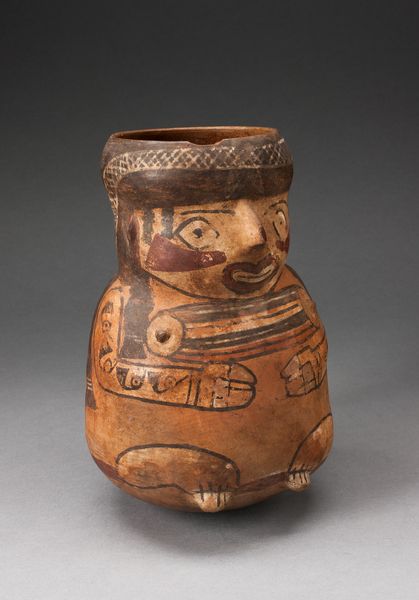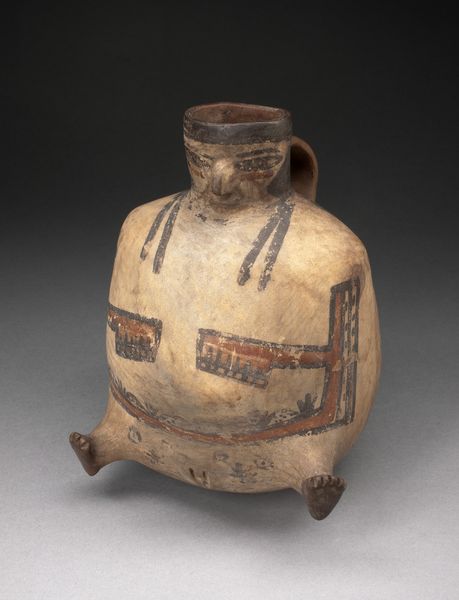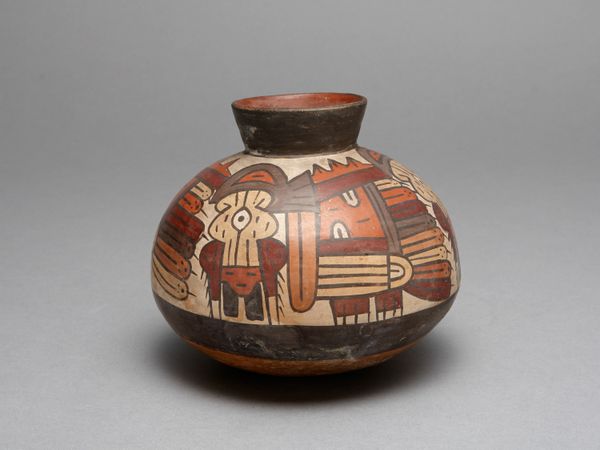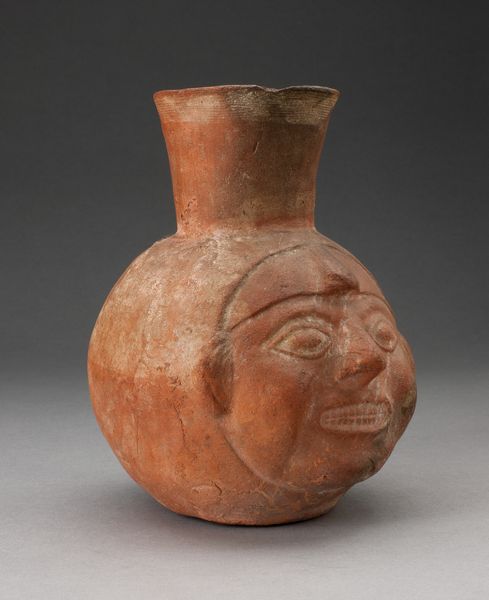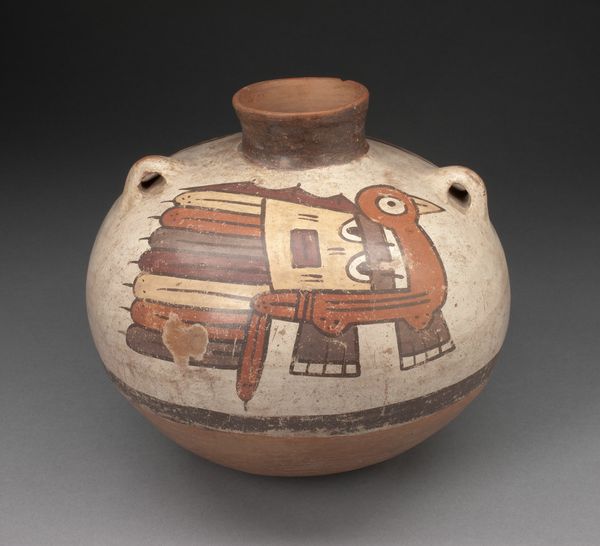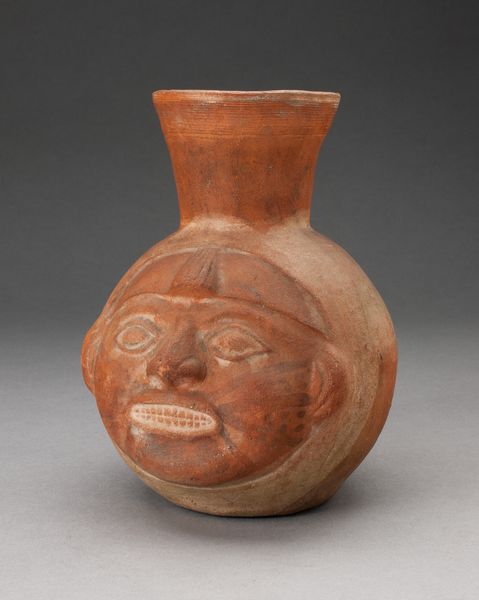
Jar in the Form of an Abstract Human Figure Possibly 700 - 1000
0:00
0:00
ceramic, earthenware
#
ceramic
#
figuration
#
earthenware
#
geometric
#
ceramic
#
indigenous-americas
Dimensions: H. 28.6 cm (11 1/4 in.)
Copyright: Public Domain
Curator: This is an earthenware jar from the Tiwanaku culture, dating possibly from 700 to 1000. What immediately strikes you about it? Editor: It's imposing. Stolid, even. The weight of history, pressed into fired clay. It makes me think about how such a utilitarian object, clearly intended for practical purposes, takes on this intense almost spiritual presence through its anthropomorphic design and the painted geometric figures. Curator: Precisely. It’s so interesting to me how they’ve married the mundane with the monumental, using the vessel itself as a canvas for depicting this stylized human form, a figure rendered abstract and symbolic, echoing the spiritual beliefs deeply embedded within their society. The material is so of-the-earth, humble even, yet it's been elevated. Editor: And elevated deliberately, right? You can see the attention to detail in the painted decorations. I imagine the labor involved—mining the clay, shaping it, meticulously applying the pigments, then the firing process itself. So much communal effort concentrated into this one form. What was its specific use? Ceremonial, everyday? Or was that distinction even relevant? Curator: It is difficult to pinpoint with absolute certainty. Its robustness suggests it may have been a utilitarian vessel, and at the same time the sophistication of the abstract figuration points to its ceremonial usage as a grave good or funerary urn. It reminds us that our clear distinctions between “practical” and “sacred” might not apply so neatly. This pot has soul. Editor: It’s compelling how these Indigenous American artists transformed simple materials into vehicles for conveying complex narratives, imbuing daily life objects with profound cultural meaning. Even in its abstraction, the human presence feels so tangible. You can see a similar impulse at play throughout art history, this human need to leave a mark, to make the material world speak. Curator: That’s a beautiful point. Its abstraction reminds me of the universal impulse to translate lived experiences and profound beliefs into something we can hold, something that lasts beyond our own brief existence. It certainly prompts us to contemplate the hands and hearts that shaped this. Editor: Absolutely. Reflecting on the labor, resources, and cultural values invested into creating it reframes how we perceive its significance. Curator: Agreed, what a great encapsulation of the layers imbued in such vessel, both palpable and impalpable, concrete and abstract.
Comments
No comments
Be the first to comment and join the conversation on the ultimate creative platform.
